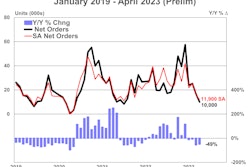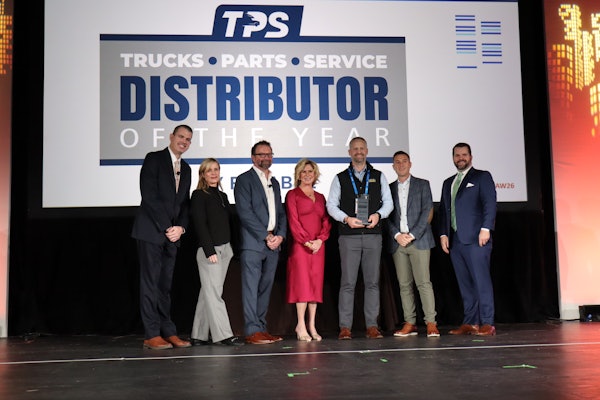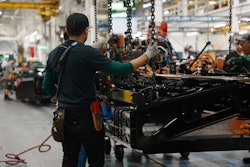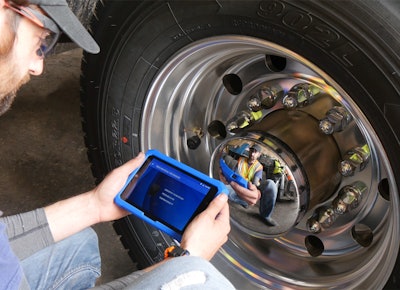
PressurePro’s pressure management systems started out as an idea on a napkin.
Vanessa Hargrave, COO/CMO of PressurePro, says her father was a serial entrepreneur, well-known in their small Missouri town.
“It was all over,” Hargrave says. “Light-up fishing poles. It was all over the place.”
A local truck driver brought him his idea for a direct tire pressure management system. And Philip Zaroor, Hargrave’s father, took it to market.
Tire data systems have, pardon the pun, exploded in recent years. There are solutions for nearly every budget and every truck made. Some just monitor tire pressure while others can work with an automatic tire inflation system (ATIS).
[RELATED: TPMS vs. ATIS: What’s the difference?]
If your customers aren’t spec’ing them or buying them, they should be. Hargrave says the benefits are clear.
“The vast majority of failures come from slow leaks. It’s not a sudden blowout; it stems from pressure issues,” Hargrave says. “We arm fleets with the data they need and the people they need so they can start moving their tire maintenance practices from reactive to proactive.”
Pressure System International’s TireView system can cover rigs with more tires than the average truck and trailer.
“One of our customers has a specialty fleet with up to 40 tires on one trailer,” says Craig Smith, vice president of marketing and communications at PSI. “Add the tractor with two front steers, eight driver tires and a lift axle, and this configuration adds up to 52 tires.”
PSI’s TireView also offers an ATIS system that can work with both its tire pressure monitors and telematics systems for a complete system. While PressurePro’s solutions are aftermarket-only (Hargrave says some owners opt to add PressurePro over the top of a dead OEM system), PSI. systems can be aftermarket additions or OEM-installed.
[RELATED: PSI launches dedicated website for TPMS]
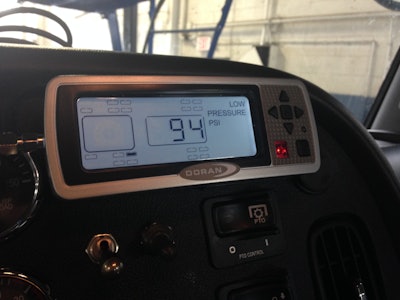 Doran's systems can either pair with existing telematics or an in-cab display can be installed to show tire pressures.
Doran's systems can either pair with existing telematics or an in-cab display can be installed to show tire pressures.
Doran Manufacturing, who has offered TPMS solutions since 2001, also can come OEM-installed or on the aftermarket and covers all kinds of fleets and applications. The company’s valve-stem sensors return a tire pressure and temperature every 16 seconds and also can deliver information via an in-cab Doran display or through a telematics provider.
The company also offers a patented SmartLink system that enables for hands-free drop-and-hook of trailers. When a trailer is connected and powered up, a handshake signal goes out from the trailer transceiver to the monitor. Trailer tire data can then be received in the cab. When the trailer is disconnected, the receiver realizes it and the trailer tires drop off.
 How PSI's automatic tire inflation system works.
How PSI's automatic tire inflation system works.
All three companies offer solutions that install on valve stems or internally. Hargrave says some clients worry about external sensors being stolen, but PressurePro hasn’t really found that to be the case.
TPMS sensors don’t just sense tire pressure. They can also pick up temperature readings, which can indicate brake or wheel end problems.
“Our latest offering is Digital ThermALERT for ATIS configurations,” P.S.I.’s Smith says. “A thermal conductor wire is attached to the system press plug in the critical heat area where the bearings meet the spindle on each wheel end. That heat signature is conducted through a TireView sensor fitted to the trailer axle, and in turn transmits real-time wheel end temperatures to the TireView LIVE platform or your telematics provider. This helps fleets make smart decisions about equipment break-in and maintenance.”
All three companies say customers can see a return on their TPMS/ATIS investment in a year or even less. Doran says savings can come from maximizing tread life, reducing catastrophic tire failures and roadside calls, reducing the costs of labor from technicians checking tires, protecting the quality of casings for retreading, improving fuel efficiency, and enhanced safety for driver retention and recruitment.
[RELATED: Commentary: A no-brainer return on investment]
“In trucking, a lot of our customers are seeing a return in under a year,” PressurePro’s Hargrave says. “On heavier equipment, it’s even lower. We save one blowout and that’s one roadside call, and you’ve paid for the system.”
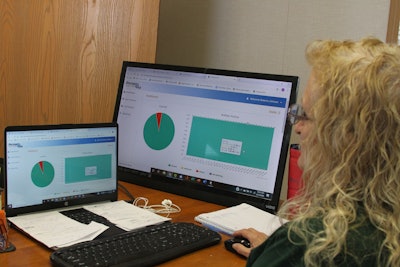 A woman looks at computer screens showing data from PressurePro's tire sensors.
A woman looks at computer screens showing data from PressurePro's tire sensors.
Max Zimmerman of Zimmerman Transportation is a PressurePro customer. He says in 2022, his fleet of trucks averaged $10,700 per month in roadside service bills. In 2023, after installing PressurePro sensors, his bills dropped to an average of $4,795 per month.
“PressurePro has also alerted us to an internal issue where the air inflation system was over pressurizing our tires due to malfunctioning regulators,” Zimmerman says.
PSI points to fuel efficiency in calculating its system’s ROI.
“An FMCSA 2007 study found that only 44% of tires were within 5 psi of their target pressure,” Smith says. “This is especially important when considering low rolling resistance tires are the norm. We have found maintaining proper cold tire pressure can offset an investment in less than one year.”

